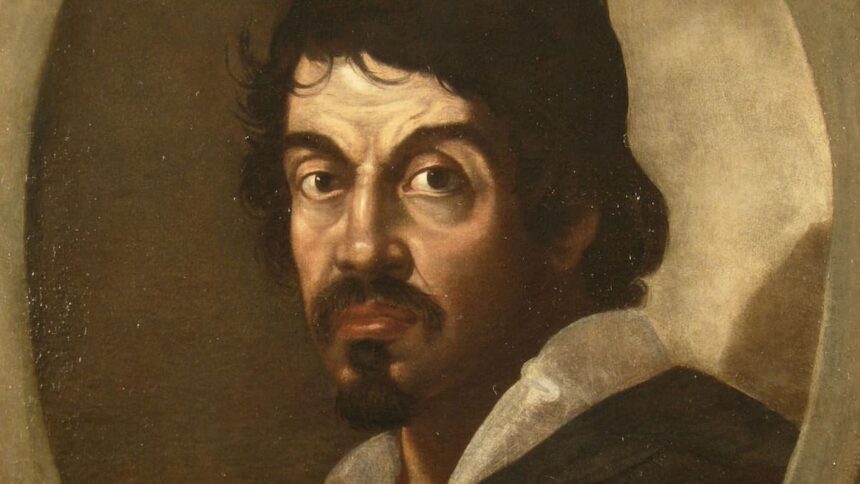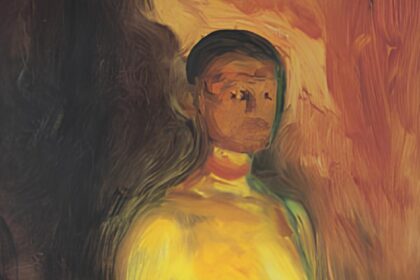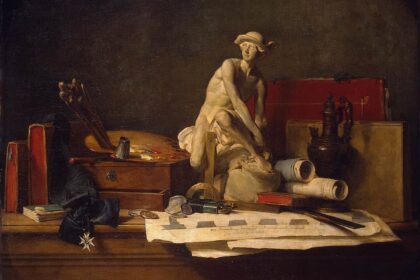He Was an Oratorian
Perhaps influenced by his younger brother, Giovan Battista, who became a priest, Caravaggio embraced the vision of the Oratory congregation founded by Saint Philip Neri in the 16th century. This movement sought to emulate the simple life of the early Christians.
That is why, in his religious paintings, pilgrims appear in rags and barefoot—their poverty is depicted as sacred, symbolizing piety.
He Drew Before He Painted
Although it has often been claimed that Caravaggio did not draw, a thorough study of his early works has revealed that he did, in fact, sketch his subjects on the light preparatory layers of his paintings. He used either charcoal or a very fine brush. Given his meticulous attention to detail, it is no surprise that he initially outlined his compositions—just like his contemporaries.
This was part of his artistic training.
His Biggest Patron Was a Cardinal
Francesco Maria Bourbon del Monte, who was made a cardinal by Pope Sixtus V in 1585, was an avid Italian art collector. He was Caravaggio’s most frequent client—at the time of his death, he owned eight of the artist’s paintings. Caravaggio considered Cardinal del Monte his mentor, as he was the one who secured him the commission that became a turning point in his career: the decoration of the Contarelli Chapel in 1600.
He May Have Spent Time in Prison
Caravaggio’s biographers sometimes struggle to piece together the exact timeline of his life. While some claim he arrived in Rome in 1592, others believe he did not reach the Italian capital until 1596. If the latter is true, this would shorten his productive period by four years and make him an even more prolific painter. According to some accounts, these missing four years were spent in prison—for allegedly assaulting a man in Milan.
You Can Step Into His Mind
The exhibition Dentro Caravaggio (Inside Caravaggio), held in Milan until the end of January 2018, featured around twenty of the artist’s works from major European museums. These were accompanied by animations and X-rays, allowing visitors to trace the evolution of his paintings—additions, removals, and alterations. For instance, it was discovered that Caravaggio initially painted a lamb, a traditional iconographic symbol, in his Saint John the Baptist painting before later removing it.
He Was One of the First Academicians
In 1593, Federico Zuccaro redefined the status of painters, elevating the value of their work. At the time, two artistic theories clashed: disegno (drawing and intention) versus colore (color). The painters’ guild was transformed into an academy—L’Accademia di San Luca (The Academy of Saint Luke)—and Caravaggio’s name was among the first on the founding list.
He Carried a Sword
Caravaggio’s friendship with Cardinal del Monte granted him access to ecclesiastical circles and allowed him to adopt the customs of the old nobility. He embraced their tastes and privileges—including the right to carry a sword and the code of honor that permitted its use. Unfortunately, he had no qualms about wielding it, which ultimately contributed to his downfall.
Some of His Paintings Were Rejected
As Caravaggio’s success grew, he attracted increasingly prestigious patrons. While it has often been said that many of his paintings were dismissed, we now know that they actually gained significant public admiration. That said, the first versions of works like Saint Matthew and the Angel and The Conversion of Saint Paul were indeed rejected by their commissioners—but they were later sold elsewhere.
He Had an Enemy
Caravaggio was well known for his violent, impulsive, and combative nature. He often settled disputes through duels—following the code of honor—which led to multiple stints in prison. One of the most vocal figures in tarnishing his reputation was another Italian painter of his time, Giovanni Baglione. Baglione became a fierce critic of Caravaggio, particularly in The Lives of Painters, Sculptors, and Architects, a historical account of art that he published in 1642.
His Remains May Be in a Church in Porto Ercole
Since Caravaggio died at the Santa Maria Ausiliatrice hospital in Porto Ercole, it was long assumed that his body was hastily buried in the San Sebastiano cemetery, in accordance with local customs. However, in 2010, a carbon-14 analysis of bones found in an ossuary in a church in Porto Ercole suggested that they likely belonged to Caravaggio. Yet, since this conclusion is not 100% certain, some doubt remains.






